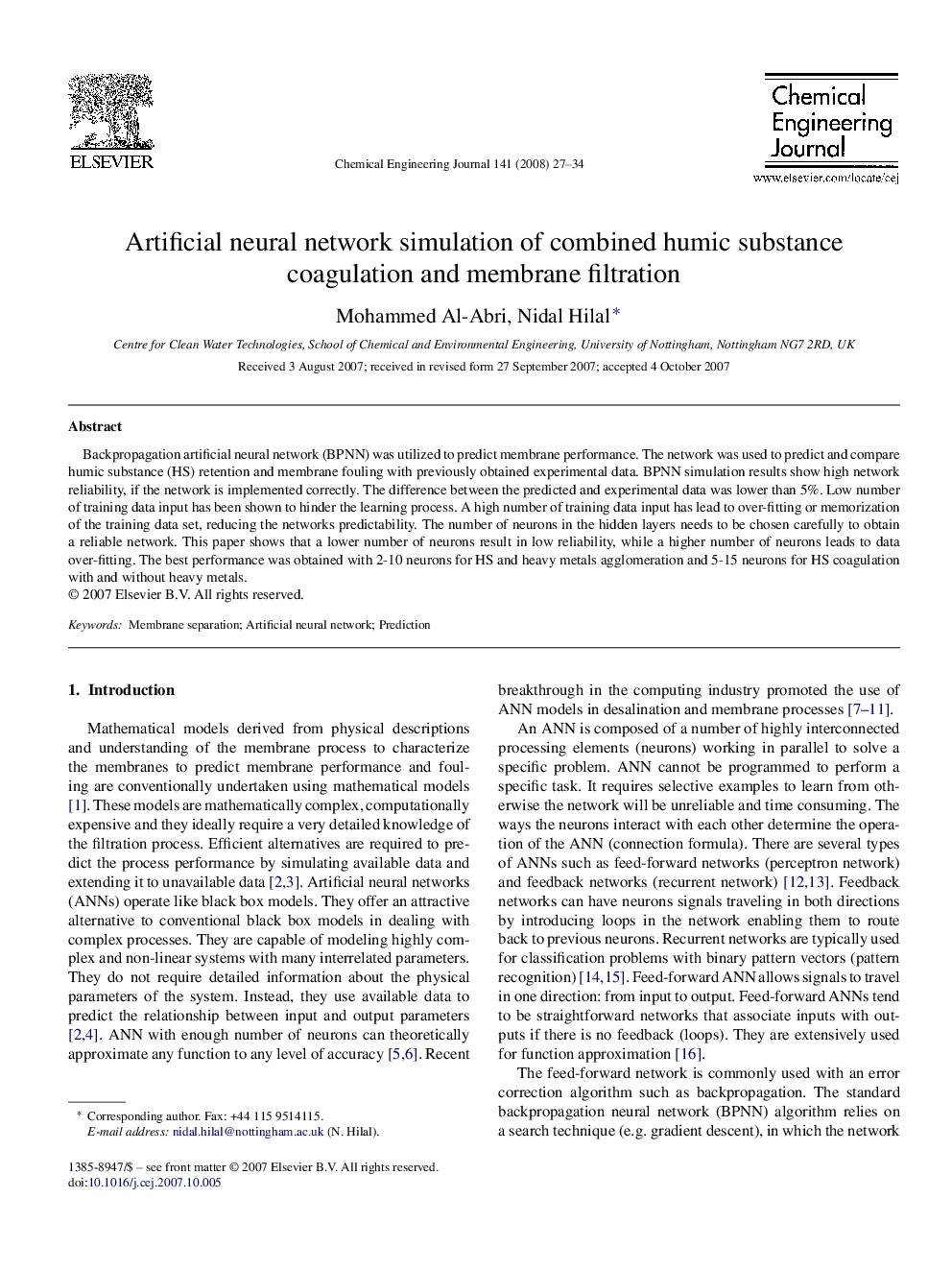| Article ID | Journal | Published Year | Pages | File Type |
|---|---|---|---|---|
| 153037 | Chemical Engineering Journal | 2008 | 8 Pages |
Backpropagation artificial neural network (BPNN) was utilized to predict membrane performance. The network was used to predict and compare humic substance (HS) retention and membrane fouling with previously obtained experimental data. BPNN simulation results show high network reliability, if the network is implemented correctly. The difference between the predicted and experimental data was lower than 5%. Low number of training data input has been shown to hinder the learning process. A high number of training data input has lead to over-fitting or memorization of the training data set, reducing the networks predictability. The number of neurons in the hidden layers needs to be chosen carefully to obtain a reliable network. This paper shows that a lower number of neurons result in low reliability, while a higher number of neurons leads to data over-fitting. The best performance was obtained with 2-10 neurons for HS and heavy metals agglomeration and 5-15 neurons for HS coagulation with and without heavy metals.
